transreduction
Transitive reduction
Syntax
Description
H= transreduction(G)Gas a new graph,H. The nodes inHare the same as those inG, butH有不同的边缘。Hcontains the fewest number of edges such that if there is a path from nodeito nodejinG, then there is also a path from nodeito nodejinH.
Examples
Transitive Reduction of Complete Graph
Create and plot a complete graph of order four.
G = digraph([1 1 1 2 2 2 3 3 3 4 4 4],[2 3 4 1 3 4 1 2 4 1 2 3]); plot(G)
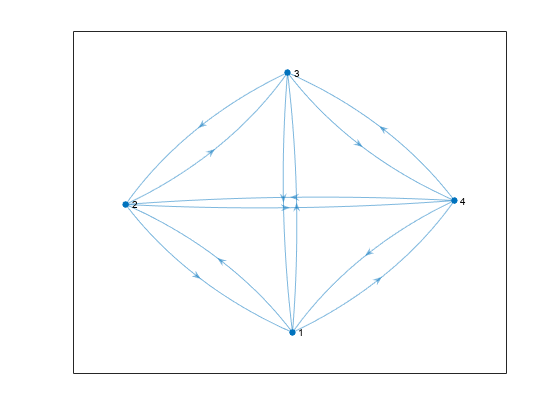
Find the transitive reduction and plot the resulting graph. Since the reachability in a complete graph is extensive, there are theoretically several possible transitive reductions, as any cycle through the four nodes is a candidate.
H = transreduction(G); plot(H)
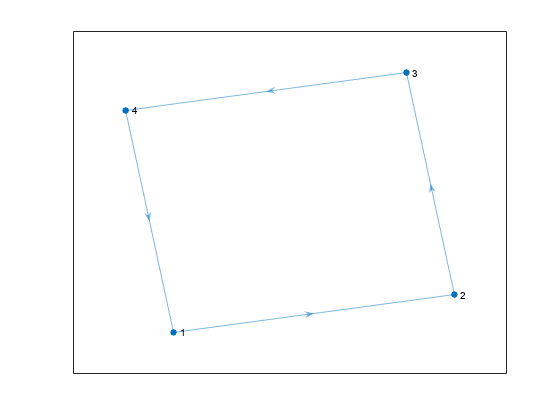
Two graphs with the same reachability also have the same transitive reduction. Therefore, any cycle of four nodes produces the same transitive reduction asH.
Create a directed graph that contains a different four node cycle: (1,3,4,2,1).
G1 = digraph([1 3 4 2],[3 4 2 1]); plot(G1)
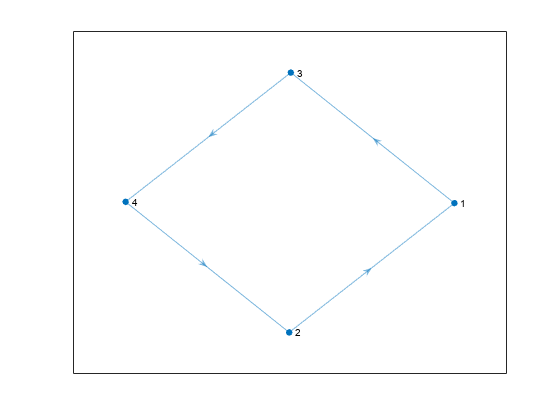
Find the transitive reduction ofG1. The cycle inG1is reordered so that the transitive reductionsHandH1have the same cycle, (1,2,3,4,1).
H1 = transreduction(G1); plot(H1)
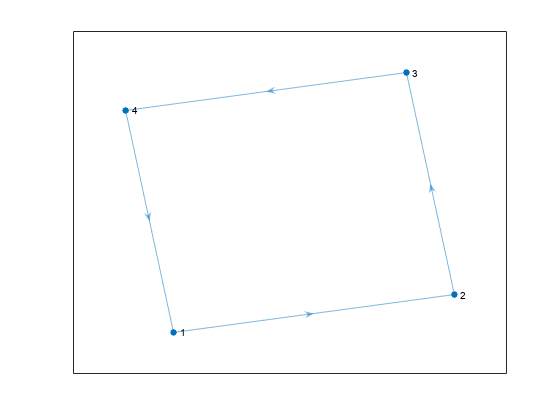
Unique Transitive Reduction
Create and plot a directed acyclic graph.
s = [1 1 1 1 2 3 3 4]; t = [2 3 4 5 4 4 5 5]; G = digraph(s,t); plot(G)
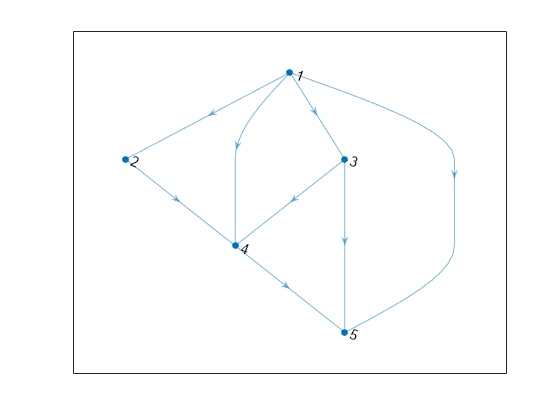
Confirm thatGdoes not contain any cycles.
tf = isdag (G)
tf =logical1
Find the transitive reduction of the graph. Since the graph does not contain cycles, the transitive reduction is unique and is a subgraph ofG.
H = transreduction(G); plot(H)
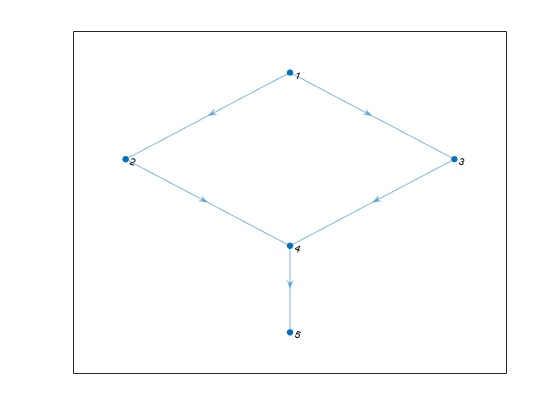
Input Arguments
G—Input graph
digraphobject
Input graph, specified as adigraphobject. Usedigraph创建一个有向图object.
Example:G = digraph([1 2],[2 3])
Output Arguments
H— Transitive reduction ofG
digraphobject
Transitive reduction ofG,返回digraphobject. The tableG.Nodesis copied toH, but any properties inG.Edgesare dropped.Hmight contain new edges not present inG.
Hcontains the fewest number of edges that still preserve the reachability of graphG. In other words,transclosure(H)is the same astransclosure(G).
Ifisdag(G)istrue, thenHis unique and is a subgraph ofG.
More About
Transitive Reduction
The transitive reduction of graphGis the graph with the fewest edges that still shares the same reachability asG. Therefore, of all the graphs that have the same transitive closure asG, the transitive reduction is the one with the fewest edges. If two directed graphs have the same transitive closure, they also have the same transitive reduction.
Version History
See Also
Open Example
You have a modified version of this example. Do you want to open this example with your edits?
MATLAB Command
You clicked a link that corresponds to this MATLAB command:
Run the command by entering it in the MATLAB Command Window. Web browsers do not support MATLAB commands.

Select a Web Site
Choose a web site to get translated content where available and see local events and offers. Based on your location, we recommend that you select:.
You can also select a web site from the following list:
How to Get Best Site Performance
Select the China site (in Chinese or English) for best site performance. Other MathWorks country sites are not optimized for visits from your location.
Americas
- América Latina(Español)
- Canada(English)
- United States(English)
Europe
- Belgium(English)
- Denmark(English)
- Deutschland(Deutsch)
- España(Español)
- Finland(English)
- France(Français)
- Ireland(English)
- Italia(Italiano)
- Luxembourg(English)
- Netherlands(English)
- Norway(English)
- Österreich(Deutsch)
- Portugal(English)
- Sweden(English)
- Switzerland
- United Kingdom(English)